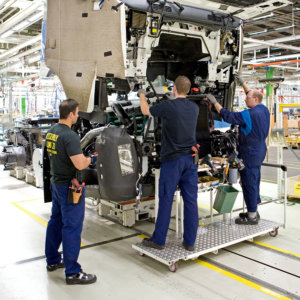What to Expect From a Corporate Lean Program
“Lean” programs have helped many manufacturers boost productivity. However, misplaced expectations of how quickly these programs can improve performance can make their implementation more difficult.
Topics
Often modeled after the Toyota Production System, corporate “lean” programs — by which we mean programs that find and eliminate unproductive activities while increasing value creation — can be powerful instruments for improving the performance of manufacturing plants. Successful lean programs help to emphasize parts of the production process that add the most value and eliminate those that don’t.
However, misplaced expectations of how quickly these programs can improve performance can make their implementation difficult — and reduce their benefits. We believe that if managers better understood the rates at which lean programs produce their improvements, then implementations would go more smoothly — leading, ultimately, to further increases in overall productivity.
A Growing Number of Lean Programs
Many multinational manufacturing companies have introduced their own lean programs. Their numbers have been growing, especially in the last decade. Caterpillar, DuPont, Electrolux, Heinz, Honeywell, Johnson Controls, Siemens, Volvo and Whirlpool are just a few examples.1 These programs are called by different names, but in the vast majority of cases, they are labeled with the company’s name followed by “production system.”
Typically, a production system is a collection of lean production principles, methods, tools and techniques.2 Its goal is to provide a clear and stable structure and a road map for instilling a culture of continuous improvement in every plant in the company’s production network. However, an inherent challenge in implementing these programs is that every plant is different — in location, size, history, process technology, labor situation and other circumstances. Furthermore, different plants in the company’s global network are likely to face different sets of competitive and market conditions. These differences tend to complicate the top-down implementation of a production system. Nevertheless, for the growing number of multinational manufacturers that have introduced, or are considering introducing, their own lean production system, the issue is not whether lean programs are useful. Instead, it is how to manage their implementation.
The Challenges of Implementation
A key issue in managing implementation is how to set targets that are appropriate for improvement as a plant moves along its production system journey. By considering this issue, senior managers can make informed decisions about how they should allocate resources and initiate specific action programs in each plant.
References
1. See T. Netland, “Exploring the Phenomenon of Company-Specific Production Systems: One-Best-Way or Own-Best-Way?” International Journal of Production Research 51, no. 4 (2013): 1084-1097.
2. See, for example, J.P. Womack and D.T. Jones, “Lean Thinking: Banish Waste and Create Wealth in Your Corporation” (New York: Simon & Schuster, 1996); and J.K. Liker, “The Toyota Way: 14 Management Principles From the World’s Greatest Manufacturer” (New York: McGraw-Hill, 2003).
i. For more details, please see T.H. Netland and K. Ferdows, “How Do Company-Specific Production Systems Affect Plant Performance?,” unpublished manuscript, February 2014.


Comments (6)
Leslie Brokaw
David Croson
Torbjorn Netland
Rabindranath Bhattacharya
Chris Reich
shridhar lolla